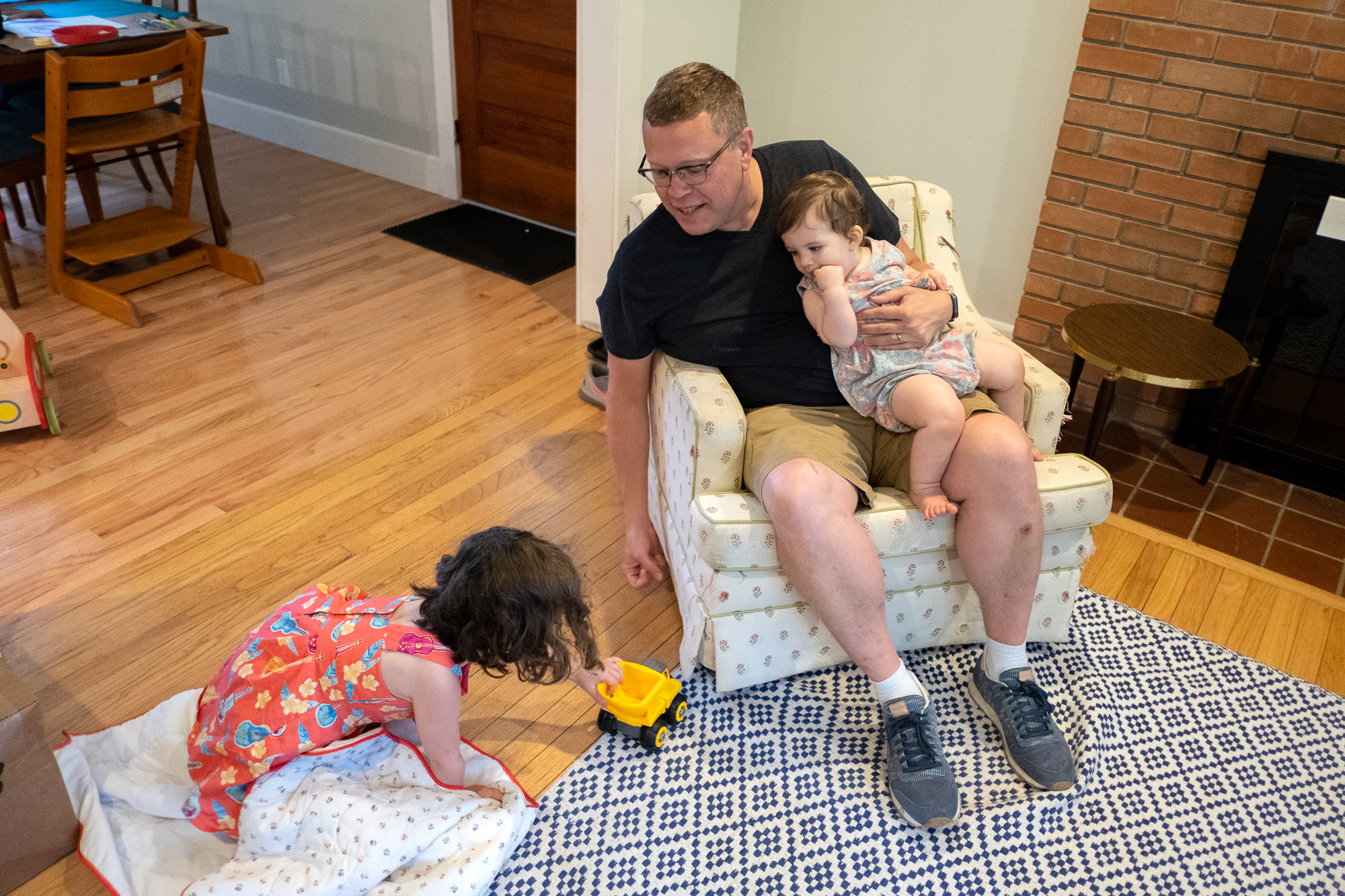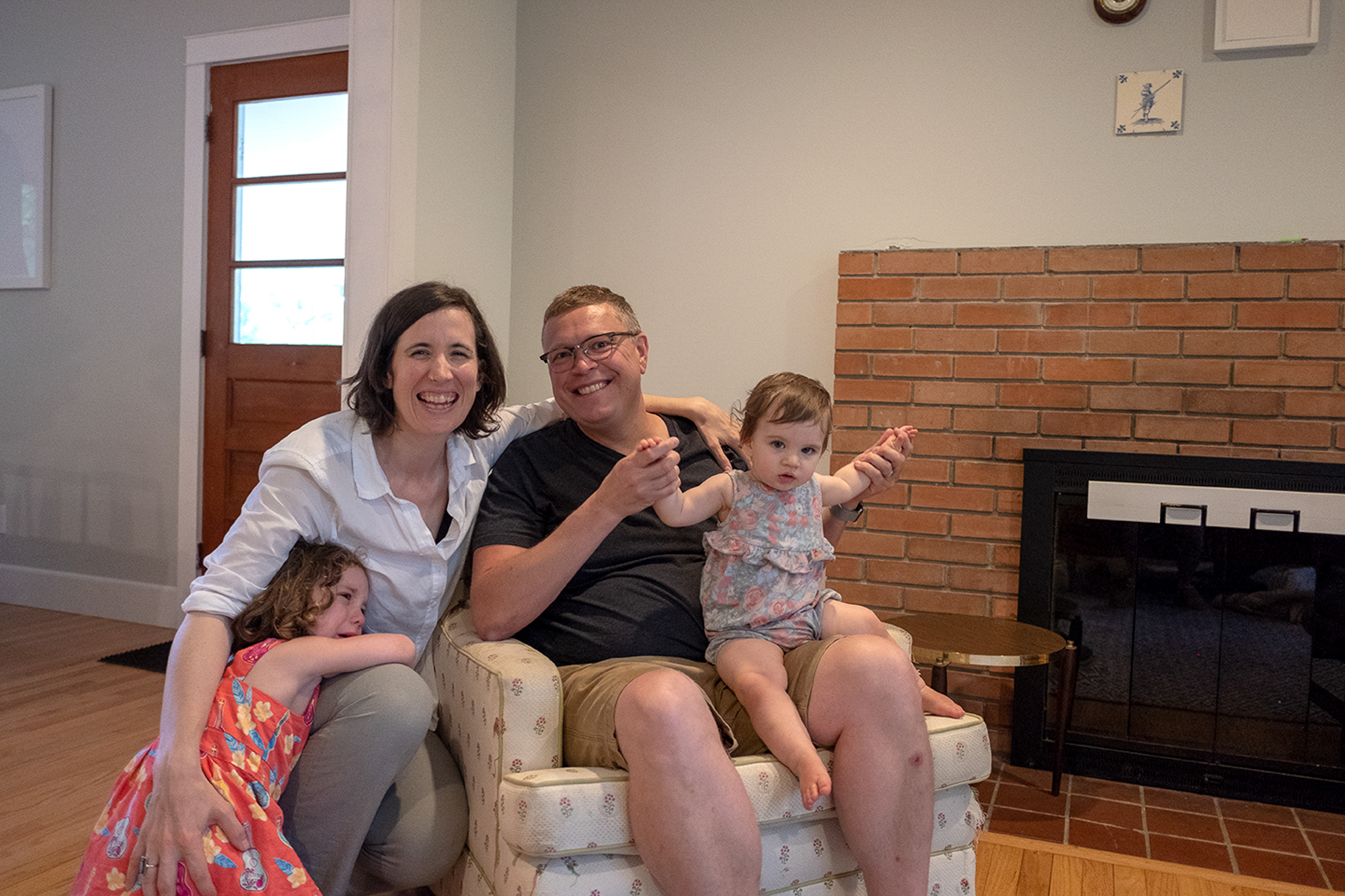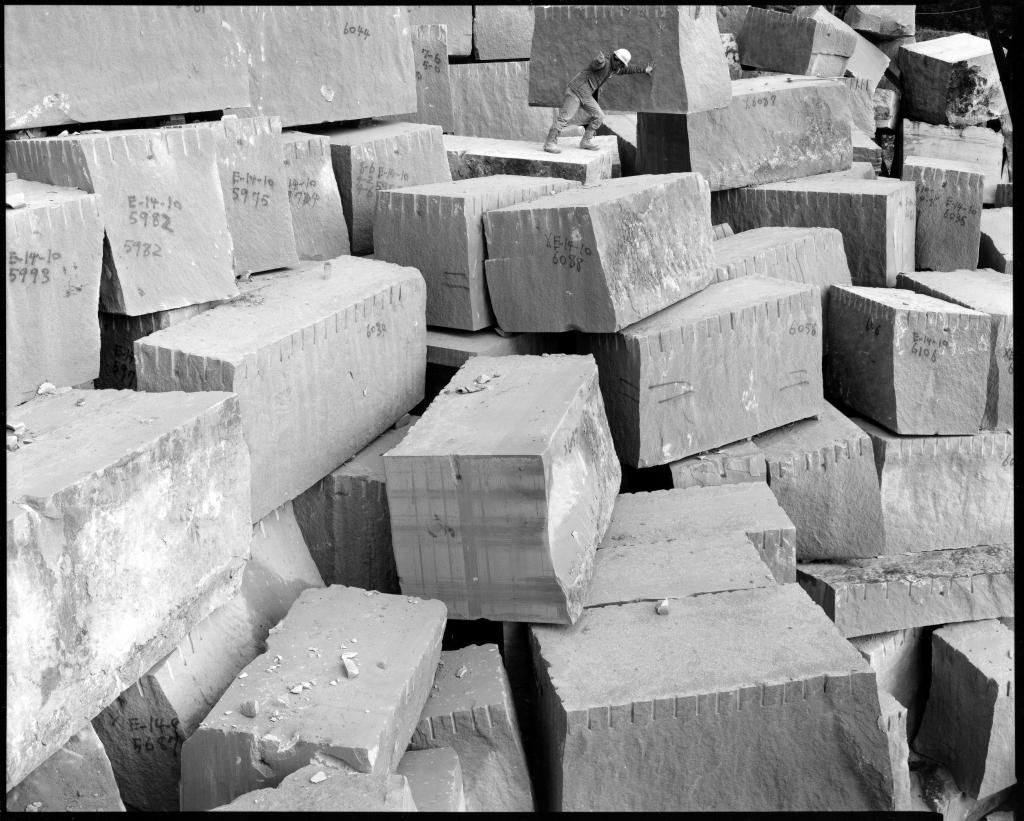Three glass-block windows on the side of a Dollar General in Olney, Illinois, glow red, white — or rather a yellowed, dirtied, aged white — and blue. Olney was one stop for photographer Nate Larson’s ongoing project to document “centroid” towns, points that have been designated by the Census Bureau as the “mean center of population in the United States.” Since the very first one was located in Chestertown, Maryland, in 1790, the points, of which there have been 25 to date, have moved steadily southwest over the years. The centroid is hypothetical, based on a physical and geographical impossibility: if all persons tallied in the census were weighted equally across an imaginary, flat map, the centroid would mark the point where this map would balance perfectly.
Larson has been documenting and researching these towns since 2014, partly to record and understand something about the American political hellscape in which so many of us are trying to live. The documentarian angle lets the photos’ messaging remain somewhat frustratingly subtle.
A surreal picture of broken industry, “Site of the Former Shoe Company, De Soto, Missouri” depicts mountains of telephones, disconnected from their cords and off their hooks, pile up inside of a decrepit warehouse, surrounded by fallen beams and meaty, pink insulation innards. The antiquated, useless phones signal the absurdity of waste; the mismatch between the photo’s title and subject suggest the ongoing cycles of stagnation, change and reuse in industrial spaces.
Three out of the four small photos of signs from Missouri, Indiana, and Maryland seem like responses to the first one, which advocates for Christianity and exhorts its viewer to “THINK AMERICAN” and “SPEAK ENGLISH.” The one to its right features a hand-scrawled version of the Gettysburg Address taped to a window. Another sign, on cardboard tacked to the side of a porch, champions love in spite of an “evil and unloving society,” and the fourth photo is of a kind-hearted, if blasé, church marquee, “DO UNTO OTHERS AS THOUGH YOU WERE THE OTHERS.”
A few of Larson’s portraits of residents, which are also portraits of places, are particularly striking — like these two side-by-side portraits of Juanita from De Soto, Missouri, and Ron of Fenton, Missouri. Ron hangs out of a doorway, staring straight into the camera, stepping into an entryway or a mudroom. Larson must have taken the photo through a glass door; Ron’s worn, pinkish face refracts through it and reappears on the image’s right side, this time seeming less confrontational and more weary or concerned. In the other photo Juanita, a tiny old woman in a lilac T-shirt, stands behind a cash register, surrounded by various sun-bleached signs advertising the prices of the shop’s chicken gizzards, livers, and “drummies.” Juanita takes up so little space in that composition, I find myself searching every detail around her — trying to comprehend less of the individual folks photographed and more of the environment and the structures that composed them. (Rebekah Kirkman)

































